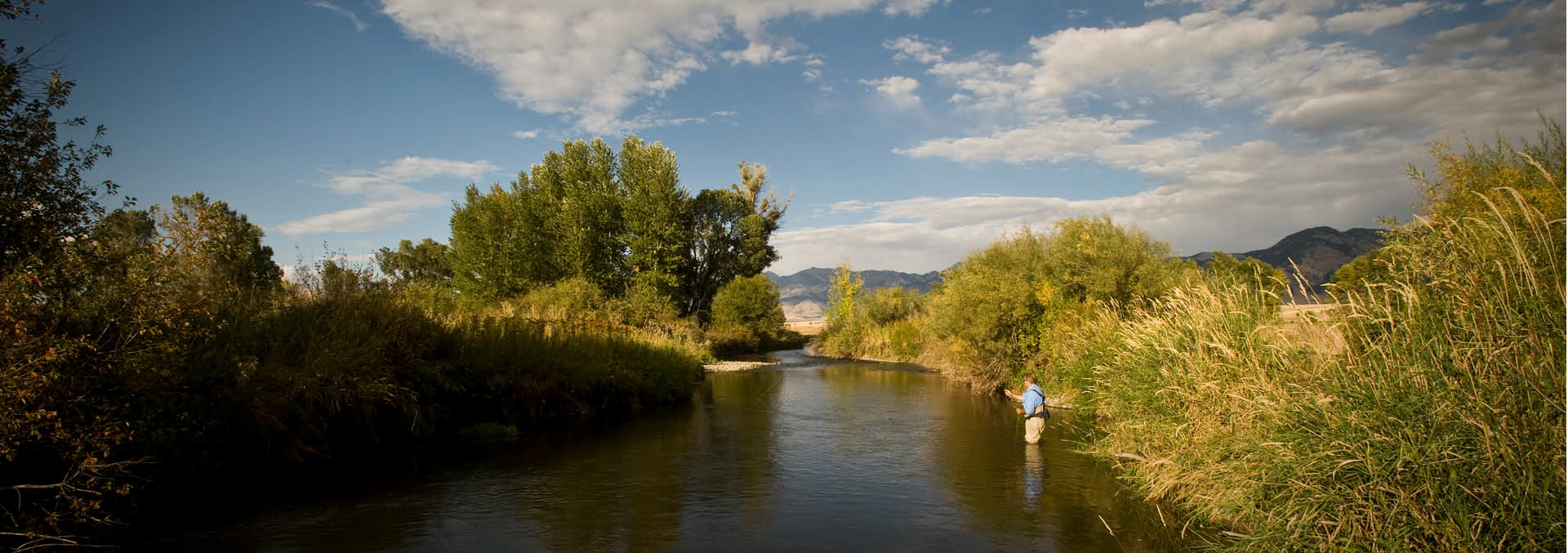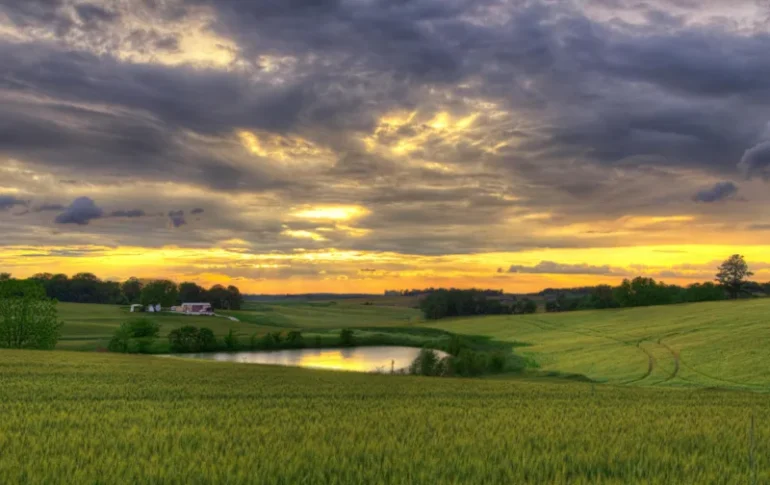Fish Habitat Restoration
By Jason Miller, Miller Recreational
A ranch’s property and conservation value are heavily influenced by water—be that solid water rights to support agricultural production or live water that can support a wild trout fishery. However, most landowners in the Western U.S. are keenly aware that the “new normal” of the hydrologic cycle means less year-to-year predictability including earlier snowmelt runoff, declining annual peak and base flows, and consequent shortages in available water for irrigation. Systemic impacts include declining spring flows, loss of sub-irrigation support for hay production, declines in upland forage production, struggling fisheries, and less abundant wildlife. In response, there has been a huge uptick in landowner interest in making their land as hydrologically resilient as possible, and by so doing, preserving and enhancing their land value.
For Bozeman-based aquatic resource and conservation consultant Gillilan Associates, Inc. (GAI) and restoration contractors Miller Recreational Development (MRD), the “new hydrologic normal” has led to high demand for creative solutions and projects to better manage aquatic resources. GAI and MRD have been collaborating closely as designers/builders for over a decade and are widely recognized as the leaders in their field. Several of these innovative project types are highlighted here.
Miller Ranch – Ruby River Restoration
The Miller Ranch near Alder, MT is a working cattle ranch in the Ruby Valley of Southwest Montana owned by the Miller family, inclusive of brothers Jason and Jeremy Miller, owners of MRD. The family has long valued a traditional ranching lifestyle that included ample hunting and fishing on their land. However, the lifeblood of the ranch, the Ruby River, was slowly but surely declining as both a fishery and reliable source of late-season irrigation water.
In 2010 the Miller family hired GAI to assess the historic and current conditions of the river on their ranch. The assessment indicated that as far back as 1954 the ranch supported a gallery cottonwood forest along the river banks that had been diminished by over 70%. Further, an earlier generation had straightened and channelized the river through the heart of the ranch and had unwittingly played into a downward trend in the overall health of the river.
Rather than pursue small efforts to improve in-channel habitat and the riparian forest, GAI and the Millers recommended the “radical” approach of re-meandering the river to completely transform the river into a naturally functioning asset rather than a so-so fishery. The Miller family was able to work with the local conservation district to hire GAI to develop designs and secure permits for this ambitious undertaking. Grant monies were raised through the Natural Resources Conservation Service and non-profit conservation groups while the Miller family filled in the funding gaps including both cash and in-kind construction services.
The project involved construction, from “whole cloth”, of several thousand feet of the new channel. As-built, visitors to the ranch who were unaware of the project design would frequently point to the newly created channel and ask “where did you guys do the work?” Today the project is widely noted as an innovative approach to the restoration of incised rivers and after several years of runoff, it is functioning perfectly, naturally recruiting new willows and cottonwoods on its constructed bars, providing exceptional spawning habitat for the native brown and rainbow trout and providing exceptional angling. There is no question in the Millers’ minds that the work added to both their physical land value and the intangible feeling that their commitment to river conservation was going to benefit the community and river for decades to come.
J-Bar-L Ranch and The Nature Conservancy’s Long Creek Ranch
Beginning in 2013, GAI and MRD were hired by The Nature Conservancy to develop innovative plans and interventions on several miles of Long Creek, located in the Centennial Valley of Southwest Montana. While supporting native fluvial arctic grayling in its headwaters, the stream flowing through both the TNC-owned ranch and downstream neighboring J-Bar-L was in extremely poor condition due to decades of channel downcutting, large-scale erosion, and late summer dewatering. TNC challenged GAI and MRD to design a project that: 1) reconnected the channel to its floodplain; 2) created hydrologic conditions that emulated that of a beaver-mediated system and; 3) raised the valley water table to support increased late-season flows and sub-irrigation of adjacent pasture.
GAI and MRD developed a unique “beaver dam mimicry” approach that involved the construction of a total of 20 “dams” built completely with site-sourced gravel and native sod. Project results have been immediate—an expanding zone of sub-irrigation raised water tables and a greatly stabilized channel. The project is being scientifically monitored by a groundwater scientist who is utilizing the project for his Ph.D. dissertation.
River Why Ranch
GAI and MRD were hired by a conservation land investment fund to maximize the land value of their purchase by restoring over a mile of the North Fork Musselshell River near Checkerboard, MT. The river through the ranch had been historically moved to the edge of the valley and channelized to improve grazing and hay pasture. The river held few trout and was judged to be in very poor condition.
GAI and MRD built over one mile of new channel exclusively with site-sourced materials. While not publically accessible, it is now supporting a blue ribbon fishery and acting as a nursery reach for miles of river downstream.
The projects described here are just some examples of managing water resources for increased land value. Other typical projects undertaken by GAI and MRD include irrigation infrastructure improvements, assisting owners with instream flow leases, managing invasive plants in riparian areas, and wetland and pond creation. In general, anything that improves the distribution of water holds water on the land, and improves valley hydration are all effective hydrologic resiliency strategies that increase short- and long-term land value. The hydrologic resiliency field is growing rapidly, so landowners can expect continued innovation and approaches that make sense for a variety of landscapes and conservation objectives.





